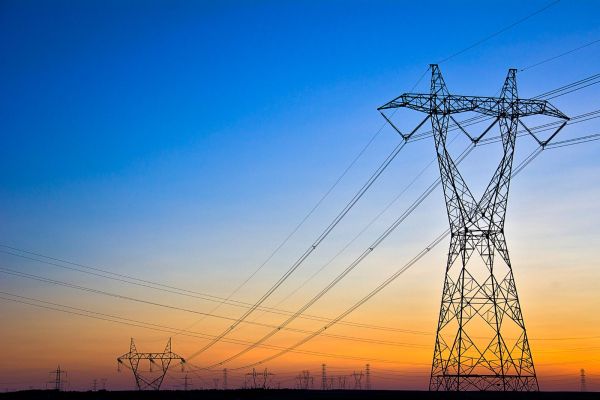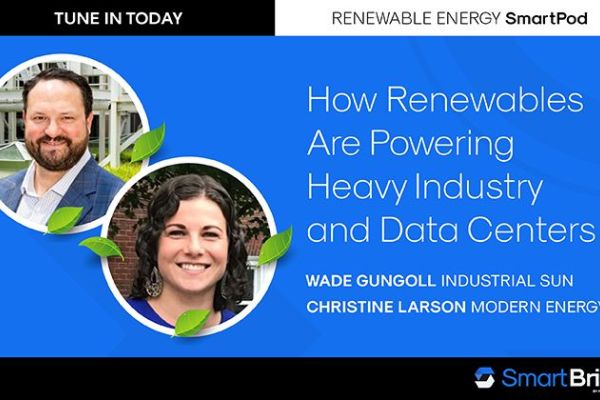6 Ways Net-metered Solar Improves Carbon Accounting for Industrials
Insights
Oct 25, 2023
Written by Drew Golder

For many companies — including industrials — it has become expected standard practice to track and report the carbon emissions footprint of their operations, their upstream supply chains, and their downstream products or services.
The motivations for doing so are diverse:
- Reaching corporate emissions-reduction and/or net-zero targets
- Responding to pressures from the C suite, shareholders, or activist investors
- Improving brand reputation
- Gaining a competitive edge through green differentiation
- Future-proofing carbon accounting in anticipation of potential climate disclosure requirements for publicly traded and large private companies.
Despite diverse motivations, the “formula” for putting theory into practice follows a similar two-pronged approach: 1) invest in strategies that achieve the greatest decarbonization impact for the least cost, and 2) make the accounting and reporting as easy and painless as possible. Simple, right?
The reality can get complicated, quickly. So in this article, we’ll take a look at the most important carbon accounting considerations for industrials, plus 6 ways that net-metered industrial solar in particular stands out from the crowd of possible solutions.
A focus on Scope 2 and Scope 3 emissions
As you might already know, a company’s carbon emissions are categorized into three scopes:
- Scope 1: Direct operational emissions for owned facilities and assets, usually from fossil fuel combustion. For industrials, this often translates into fossil fuel combustion for process heat, for heat and hot water, and for diesel and other fuels that drive trucks and other fleet vehicles.
- Scope 2: Indirect emissions associated with purchased energy, especially related to electricity generation for grid-supplied electrons from the utility.
- Scope 3: All other indirect emissions, including from both upstream and downstream in a company’s supply chain and/or value chain. One company’s Scope 3 emissions are other companies’ Scopes 1 and 2 emissions. And since industrials often sit upstream in material supply chains (e.g., petrochemical refining, steel production, hydrogen production), downstream companies will be looking upstream to your Scopes 1 and 2 operational emissions to lower their Scope 3 emissions.
Various carbon accounting practices defined in the GHG Protocol, ISO 14067, and CDP address how to calculate your emissions footprint.
A closer look at Scope 2 electricity emissions
GHGP is the most-popular voluntary framework for carbon accounting globally. It currently defines two primary carbon accounting methods Scope 2 emissions related to electricity:
- Location-based method: For this approach, you use the local grid generation mix for each of your facilities as the basis for your electricity emissions, using sources such as EPA eGRID. This method is convenient and straightforward, but doesn’t provide a way to account for off-site renewable energy procurement.
- Market-based method: For this approach, voluntary procurement of off-site renewable energy — such as by signing a traditional physical or virtual power purchase agreement (PPA) — gets netted against your facilities’ electricity consumption. For any remaining load, companies then use a residual grid mix factor to calculate the associated emissions. Determining the residual grid mix is infamously challenging, because it essentially requires perfect market information; you need to know everyone else’s renewable PPA information, so that you can back those claims out of the residual grid mix calculation (to avoid double counting that renewable energy).
More recently, some companies are also further supplementing their emissions reporting with impact accounting. Whereas the market-based method treats all renewable energy as zero emissions, impact accounting looks at how much fossil fuel emissions new renewable projects displace from the power grid.
Separate guidelines from GHGP, ISO, and others dictate how you further translate this into embodied carbon calculations. Your Scope 2 operational emissions reductions can then provide knock-on Scope 3 benefits to the customers who use your materials or products.
Six carbon accounting benefits of net-metered industrial solar
Now that we have a better sense of the carbon accounting lay of the land, let’s look at sixspecific ways net-metered industrial solar improves your Scope 2 emissions reductions, calculations, and reporting:
- Provides proximity: Net-metered industrial solar is proximate to load and facilities (vs. offsite PPAs). This poses a major advantage at a time when various NGOs, accounting bodies, and standards seem to be increasingly prioritizing procuring green energy from within the same grid region as load, in order to create greater connectivity between load, renewable energy procurement, and net grid emissions impacts.
- Simplifies accounting: Because net-metered industrial solar gets treated as behind-the-meter, on-site solar, it simplifies Scope 2 accounting. Your net-metered industrial solar doesn’t get included as part of the broader grid generation mix. You can simply net your industrial solar power from your facility load, then use the simpler location-based method for your remaining load — without needing to worry about residual grid mixes if using the market-based method.
- Scope 3 embodied carbon reductions: Embodied carbon calculations and environmental product declarations (EPDs) determine a “project boundary” for allocating emissions to a material, product, or service. Net-metered industrial solar sits more neatly within those boundaries (vs. offsite VPPAs). Moreover, since net-metered solar power again proximate to your load, it is also not subject to the required “haircut” (e.g., 4.4% in ERCOT) to account for transmission losses as part of Scope 3 reporting for “distant” direct or virtual PPAs.
- Increases budget efficiency of dollar-per-pound of carbon: Given the incredible economics of net-metered industrial solar in ERCOT (i.e., it virtually eliminates 4CP charges), the $/CO2 efficiency offers the additional advantage of cost efficiency.
- Avoids double counting: Since net-metered industrial solar sits behind the proverbial meter and isn’t included in the overall grid mix, it greatly reduces the likelihood of double counting. Other companies aren’t going to also claim your MWh of solar generation, and you can be assured that your calculations and emissions benefits are accruing to your company alone.
- Supports reducing embodied emissions: Net-metered solar helps differentiate your company from others in upstream supply chains, from steel and aluminum to petrochemicals and more.
Level up carbon accounting with net-metered solar
The decision to meet environmental standards is a win-win for your company in terms of profit, performance and planet. By reimagining renewables strategy, you can ramp up carbon accounting to help deliver on your company’s sustainability goals while supporting the bottom line.
From refineries and compression stations to manufacturing plants, terminals and data centers, we help high-energy demand customers responsibly develop power projects that meet decarbonization and financial goals for your company — and your customers. Contact us to discuss the opportunity.
Drew Golder manages all transmission and regulatory activity for Industrial Sun. For more information, visit www.industrialsun.com.




